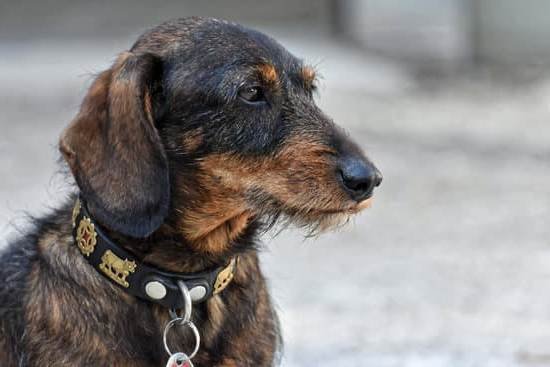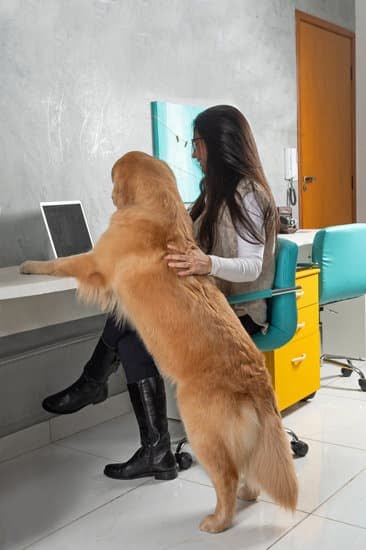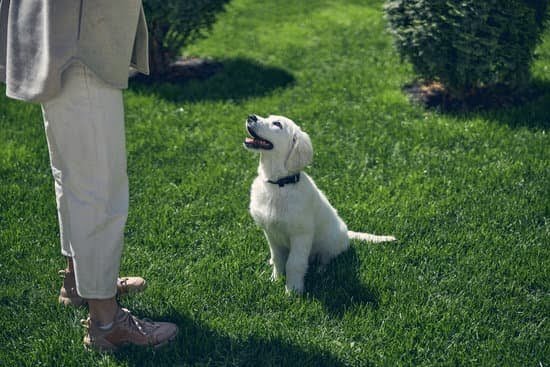Are you constantly asking yourself, “Is my dog potty trained?” Understanding the concept of potty training for dogs is essential for pet owners who wish to maintain a clean and stress-free environment in their homes. Potty training involves teaching your dog where it is appropriate to eliminate waste, whether indoors on a designated spot or outside. It requires patience, consistency, and a clear routine to achieve success.
One of the key indicators that your dog may not be fully potty trained is frequent accidents inside the house. If your furry friend consistently relieves themselves in inappropriate areas despite previous training efforts, it may be time to reassess your approach. Other signs include unusual behavior before eliminating, such as sniffing or circling, and a lack of understanding when taken outside for bathroom breaks.
To ensure successful potty training, consistency is key. Establishing a regular routine for feeding and bathroom breaks can help reinforce good habits in your dog. Avoid common mistakes such as punishing your pet for accidents, as this can create anxiety and confusion.
Instead, focus on positive reinforcement techniques like rewards and praise when they exhibit desired behavior. With dedication and a structured approach, you can determine if your dog is fully potty trained and enjoy a harmonious relationship with your four-legged companion.
Signs That Indicate Your Dog May Not Be Fully Potty Trained
Understanding the concept of potty training for dogs is essential for pet owners to effectively teach their furry companions proper bathroom habits. It involves teaching your dog where and when it is appropriate to relieve themselves, whether outdoors or on designated pads indoors. However, there are certain signs that may indicate your dog is not fully potty trained yet.
Here are some signs that your dog may not be fully potty trained:
- Frequent accidents inside the house
- Unusual behaviors before urinating or defecating
- Going to the bathroom in hidden or unusual spots
Additionally, if your dog shows signs of anxiety or discomfort after having accidents indoors, it could also be a sign that they are struggling with potty training. Recognizing these signs early on can help you address any issues promptly and reinforce proper bathroom habits.
Consistency is key when it comes to potty training success. Establishing a routine for feeding, playtime, walks, and bathroom breaks can help reinforce good habits in your dog. Positive reinforcement techniques such as praise and treats can also encourage good behavior. Remember that each dog is unique, so finding what works best for your furry friend is crucial in the potty training process.
Incorporating regular exercise and mental stimulation into your dog’s routine can also help prevent accidents due to boredom or pent-up energy. Remember to be patient and understanding during the potty training process-it may take time for your dog to fully grasp the concept. With dedication and consistent training, you can help ensure that your beloved pet is successfully potty trained.
Importance of Consistent Training and Routine for Potty Training Success
Proper potty training is essential for a happy and harmonious relationship between you and your furry friend. Consistency and routine play a crucial role in achieving success in this aspect of your dog’s training. By establishing a consistent schedule for feeding, watering, and potty breaks, you can help your dog understand when and where they should go to the bathroom. This routine not only helps prevent accidents but also reinforces positive behavior.
To ensure that your dog is fully potty trained, it is important to maintain a consistent approach to their training. Consider creating a daily schedule that includes designated times for feeding, bathroom breaks, and playtime. By sticking to this routine, your dog will learn to anticipate when they should go outside to relieve themselves. Using commands such as “go potty” while they are doing their business can also help them associate the action with the location.
Here are some tips and tricks for maintaining consistency in your dog’s potty training routine:
- Take your dog outside first thing in the morning, after meals, before bedtime, and regularly throughout the day.
- Use positive reinforcement such as treats or verbal praise when your dog goes potty in the appropriate spot.
- Be patient and understanding if accidents happen, as scolding or punishment can lead to anxiety and setbacks in their training.
Remember that every dog is unique, so it may take time for them to fully grasp the concept of potty training. Stay patient, consistent, and positive throughout the process, and you will eventually see success. If despite your efforts you find yourself asking “Is my dog potty trained?” it may be time to seek professional help to address any underlying issues or challenges that may be hindering their progress.
Common Mistakes to Avoid When Potty Training Your Dog
When it comes to potty training your dog, there are several common mistakes that pet owners should avoid in order to ensure success. One of the biggest mistakes is not being consistent with the training process. Dogs thrive on routine, so it’s important to take them out at the same times every day and praise them when they go potty outside. Inconsistency can lead to confusion for your furry friend and setbacks in the training progress.
Another mistake to avoid is punishing your dog for accidents. Accidents are a natural part of the learning process, especially for puppies who are still developing their bladder control. Punishing your dog for accidents can create fear and anxiety around potty training, making it even more challenging to achieve success. Instead, focus on positive reinforcement and rewards for good behavior.
Furthermore, rushing the potty training process is a common mistake that many pet owners make. Every dog is different, and some may take longer to grasp the concept of potty training than others. It’s essential to be patient and understanding throughout the process. Remember that consistency, positive reinforcement, and patience are key components of successful potty training for dogs.
| Common Mistakes | Avoidance Tips |
|---|---|
| Inconsistency in training | Establish a routine and stick to it |
| Punishing for accidents | Focus on positive reinforcement instead |
| Rushing the training process | Be patient and understand each dog’s unique learning pace |
Tips and Tricks for Successful Potty Training
Establish a Routine
One of the most important tips for successful potty training is to establish a consistent routine for your dog. Dogs thrive on routine, so taking them out at the same times every day to do their business can help set them up for success. Make sure to take your dog out first thing in the morning, after meals, before bedtime, and periodically throughout the day. This will help prevent accidents and reinforce good potty habits.
Use Positive Reinforcement
Positive reinforcement is key when it comes to potty training your dog. When your dog goes potty outside, be sure to praise them and offer treats as a reward. This will help them associate going to the bathroom outside with positive experiences. Avoid punishing your dog for accidents indoors as this can lead to anxiety and confusion. Instead, redirect them outside and clean up any messes without scolding them.
Supervise Your Dog
During the potty training process, it’s important to closely supervise your dog when they are indoors. Keep an eye on their behavior and body language as they may give subtle cues that they need to go outside. If you see signs that they need to go, quickly take them out to their designated potty area. By closely supervising your dog, you can prevent accidents before they happen and encourage good habits.
How to Determine if Your Dog Is Fully Potty Trained
One of the key questions that dog owners often ask is, “Is my dog potty trained?” Determining whether your furry friend has mastered the art of potty training involves observing certain behaviors and patterns. Firstly, if your dog consistently goes to the bathroom in designated areas, such as outside or on pee pads, without accidents indoors, it is a good sign that they are potty trained. This consistency showcases their understanding of where they should eliminate.
Another indicator that your dog is fully potty trained is their ability to hold their bladder and bowels for an appropriate amount of time. Adult dogs should be able to hold it for an average of 6-8 hours, while puppies may have a shorter time frame due to their smaller bladders. Additionally, fully potty trained dogs will typically give you signals when they need to go out, such as whining at the door or sniffing around restlessly.
To assess if your dog is truly potty trained, keep track of any accidents that may occur. If accidents become infrequent or non-existent over time, it’s likely that your dog has achieved full potty training. However, it’s essential to note that occasional accidents can happen even with well-trained dogs due to medical issues, stress, or changes in routine. Patience and consistent positive reinforcement are crucial in ensuring continued success in potty training your beloved pet.
| Indicators of Potty Training Success | Details |
|---|---|
| Consistent elimination in designated areas | Demonstrates understanding of where to go |
| Ability to hold bladder/bowels | Approximately 6-8 hours for adult dogs |
| Signaling for bathroom breaks | Whining at the door or restlessness may indicate the need to go out |
Dealing With Accidents
Accidents are an inevitable part of the potty training process when it comes to dogs. Even if you think “Is my dog potty trained?” accidents can still happen, especially during the initial stages of training. It is essential to understand how to effectively deal with accidents, not only to maintain a clean environment but also to prevent them from happening in the future.
When accidents occur, it is crucial to clean up the mess promptly and thoroughly. Use a specialized pet stain and odor remover to eliminate any trace of the accident, as the smell can attract your dog back to the same spot. Avoid using cleaning products that contain ammonia, as it resembles the scent of urine and may encourage your dog to continue making messes in that area.
In addition to cleaning up accidents properly, prevention is key in successful potty training. Supervise your dog closely, especially during times when they are more likely to have to go potty, such as after meals or waking up from a nap.
Take your dog outside frequently, on a consistent schedule, and praise them for going potty in the appropriate spot. By creating a routine and providing positive reinforcement, you can help prevent accidents and reinforce good potty habits in your furry friend.
Training Adult Dogs vs Puppies
When it comes to potty training, there are significant differences and challenges between training adult dogs and puppies. While puppies have the advantage of learning new behaviors quickly, adult dogs may come with established habits that can make the process a bit more complicated. Understanding these differences can help pet owners tailor their approach to effectively potty train their furry companions.
Age and Development
Puppies are like sponges when it comes to learning new things, including potty training. Their young age means they are still developing both physically and mentally, making them more receptive to training. On the other hand, adult dogs may already have ingrained behaviors that need to be unlearned or modified. Patience and consistency are key when working with older dogs to break old habits and establish new ones.
Previous Training
Another factor to consider when comparing potty training in adult dogs versus puppies is any previous training they may have had. Puppies are starting with a clean slate, while adult dogs may have already been exposed to various methods or lack of training altogether. It’s essential to understand your dog’s background and adjust your training approach accordingly. In some cases, you may need to undo previous negative associations related to potty training before introducing new routines.
Health and Physical Limitations
Adult dogs may also present challenges due to potential health issues or physical limitations that could affect their ability to control their bladder or bowel movements. It’s crucial to consult with a veterinarian if you suspect any underlying medical conditions that could be hindering your dog’s progress in potty training. Adjusting your expectations and being understanding of these limitations is essential for successful potty training in adult dogs.
Seeking Professional Help for Potty Training Difficulties
If you find yourself constantly asking, “Is my dog potty trained?” and struggling with accidents in the house, it may be time to seek professional help for potty training difficulties. Professional dog trainers can provide valuable guidance and support to address any underlying issues that may be hindering your dog’s potty training progress.
One of the main advantages of seeking professional assistance is the tailored approach that a trainer can provide based on your dog’s specific needs and behaviors. They can assess the situation, identify any potential challenges, and develop a customized training plan to help your dog become fully potty trained.
Furthermore, professional trainers have the experience and expertise to work through more complex potty training issues that may arise with adult dogs or rescue animals. They can offer effective solutions, techniques, and ongoing support to ensure success in the potty training process. Remember, it’s never too late to seek help and improve your dog’s potty training skills for a cleaner, stress-free environment for both you and your furry companion.
Frequently Asked Questions
How Do I Know if My Dog Is Fully Potty Trained?
You can tell if your dog is fully potty trained when accidents become a rare occurrence, especially during the night or when left alone. Your dog will consistently go to the designated potty area.
At What Point Is a Dog Considered Potty Trained?
A dog is considered potty trained when they consistently go to the bathroom in the correct spot without any accidents for an extended period, typically a few months. They have learned to hold it until they are taken outside.
How Do I Know My Dog Is Housebroken?
You can know that your dog is housebroken when they show signs of understanding where to go potty, either by scratching at the door or waiting for you to take them out. They also no longer have frequent accidents inside the house.

Welcome to the blog! I am a professional dog trainer and have been working with dogs for many years. In this blog, I will be discussing various topics related to dog training, including tips, tricks, and advice. I hope you find this information helpful and informative. Thanks for reading!





